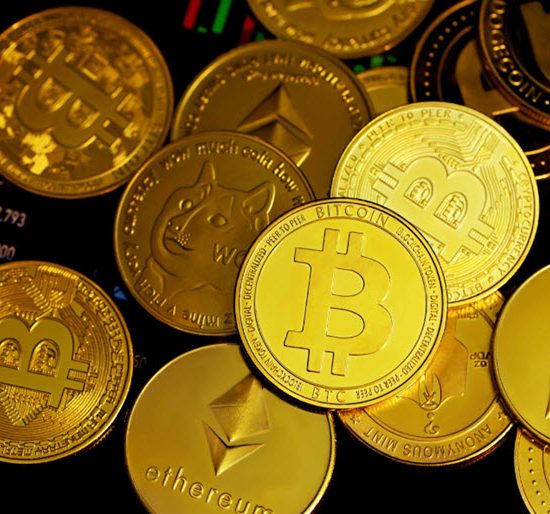Indian government’s surprise move to ban high-denomination banknotes on Nov. 8 has seen lenders lure 2 trillion rupees ($29.8 billion), as customers across the nation queue for hours to deposit the old bills.
The decision has also put tremendous pressure on the banking system to replenish the funds, as the banned bills accounted for 86 percent of money in circulation. More than 70 million transactions were recorded up to mid-day of Nov. 12, the Ministry of Finance said in a statement late Saturday. There’s adequate money in the currency chests at more than 4,000 locations and re-configuration of dispensing machines to disburse new notes will be completed within two weeks, Finance Minister Arun Jaitley said.
Lenders have been caught out by Prime Minister Narendra Modi’s unexpected and widely-praised announcement of the withdrawal of 500-rupee and 1,000-rupee notes, part of a crackdown on tax evasion and the underground economy. The Reserve Bank of India on Sunday urged the public not to be anxious and avoid going to banks repeatedly to draw and hoard cash.
“A big regret is that people are getting inconvenienced, but currency replacement of this magnitude will cause some problems,” Jaitley said at a press conference in New Delhi on Saturday. “There are long, but orderly queues. Such a big currency replacement can’t be done overnight.”
Jaitley urged people to wait for a few days and to conduct financial transactions using electronic transfers, checks and credit and debit cards.
Read more: India bans high-denomination notes
Modi is seeking to fulfill his election promise of recovering illegal income, locally known as black money. The government will take more steps to curb tax evasion, including action against benami property, he said at an event in Goa on Sunday. Benami is property actually owned by someone but held in the name of a third party.
Even so, the cash crisis has seen people standing for hours in long lines to exchange the now-defunct notes, and political rivals of Modi’s Bharatiya Janata Party relaying images of the chaos on social media.
The government deliberately didn’t reconfigure the more than 200,000 cash machines beforehand to help keep the announcement a secret, Jaitley said. The machines are being re-calibrated so that they can dispense new 500 and 2,000 rupee notes, which do not fit into the existing cash trays in the ATMs.
State Bank of India, the country’s largest, got deposits worth 478.68 billion rupees, Jaitley said. It handled 543.70 billion rupees of cash transactions in all, including deposits, withdrawals and exchange of banknotes, starting Thursday through 12:15 p.m. on Saturday, Jaitley said. The government-owned lender and its associates account for about 20 percent to 25 percent of the nation’s banking system, he said.
“The Reserve Bank assures members of the public that enough cash in small denominations is also available at the Reserve Bank and banks,” the central bank said in its statement Sunday. “Cash is available when they need it.” The RBI’s presses are printing banknotes at full capacity to ensure availability, it said Saturday.
About 120,000 out of the 200,000 ATMs are operational, and presently only 100 rupee notes are being disbursed from the machines, according to the finance ministry’s statement Saturday. To overcome cash-flow problems people are facing, the government allowed the use of old banknotes to pay court fees and utility bills until Nov. 14. It had earlier also suspended collection of tolls on national highways through the same period.
“The first few days are going to be a period of inconvenience, but long-term advantages of this are to the overall economy,” said Jaitley. “There is no mismanagement at banks. Had that been the case then not so many people would have been serviced.”-Bloomberg
Just in:
Hong Kong Unveils April 30 Launch for Landmark Crypto ETFs
//
Booming Region Fuels Innovation Surge
//
ESG Achievement Awards 2023/2024 is Open for Application, Celebrating Innovative Sustainable Practices and Responsible Risk Management
//
UAE President, Spanish Prime Minister Hold Phone Talks
//
Lai & Turner Law Firm PLLC Welcomes Eric Strocen as Director of Family Law Division
//
Ministry of Agriculture Supports Taiwanese Tea’s Entry into Singapore Market to Boost Global Presence
//
Andertoons by Mark Anderson for Thu, 25 Apr 2024
//
CBN Targets User Accounts
//
Prince Holding Group’s Chen Zhi Scholarship Clinches Silver Stevie for CSR Excellence at Asia-Pacific Stevie Awards
//
Telecom Giant Du Eyes Crypto Integration for FinTech Platform
//
UAE and Ecuador Set Course for Economic Pact
//
Etihad Airways Announces Paris Service with A380
//
ZUHYX Exchange: Embracing Social Responsibility for a Sustainable Future
//
Central Bank of Nigeria Debunks Rumors of Crypto Account Freeze
//
NetApp’s 2024 Cloud Complexity Report Reveals AI Disrupt or Die Era Unfolding Globally
//
Election Commission Has A Dismal Record On Acting Against Modi’s Breaches Of Poll Code
//
Cairo Recognizes Arab World’s Creative Luminaries at Award Ceremony
//
Cobb’s Game-Changer: Introducing One-Stop Event Transport Management Solution
//
PolyU forms global partnership with ZEISS Vision Care to expand impact and accelerate market penetration of patented myopia control technology
//
Astana International Exchange Connects with Regional Markets Through Tabadul Hub
//



![dubai flood is artificial rain behind uaes rare torrential weather[1]](https://thearabianpost.com/wp-content/uploads/2024/04/dubai-flood-is-artificial-rain-behind-uaes-rare-torrential-weather1-e1713378975696-550x550.jpg)


![2022 09 27T183330Z 84178340 RC2RJV9S1G6M RTRMADP 3 SAUDI POLITICS[1]](https://thearabianpost.com/wp-content/uploads/2024/04/2022-09-27T183330Z_84178340_RC2RJV9S1G6M_RTRMADP_3_SAUDI-POLITICS1-e1712223217759-550x550.jpg)

